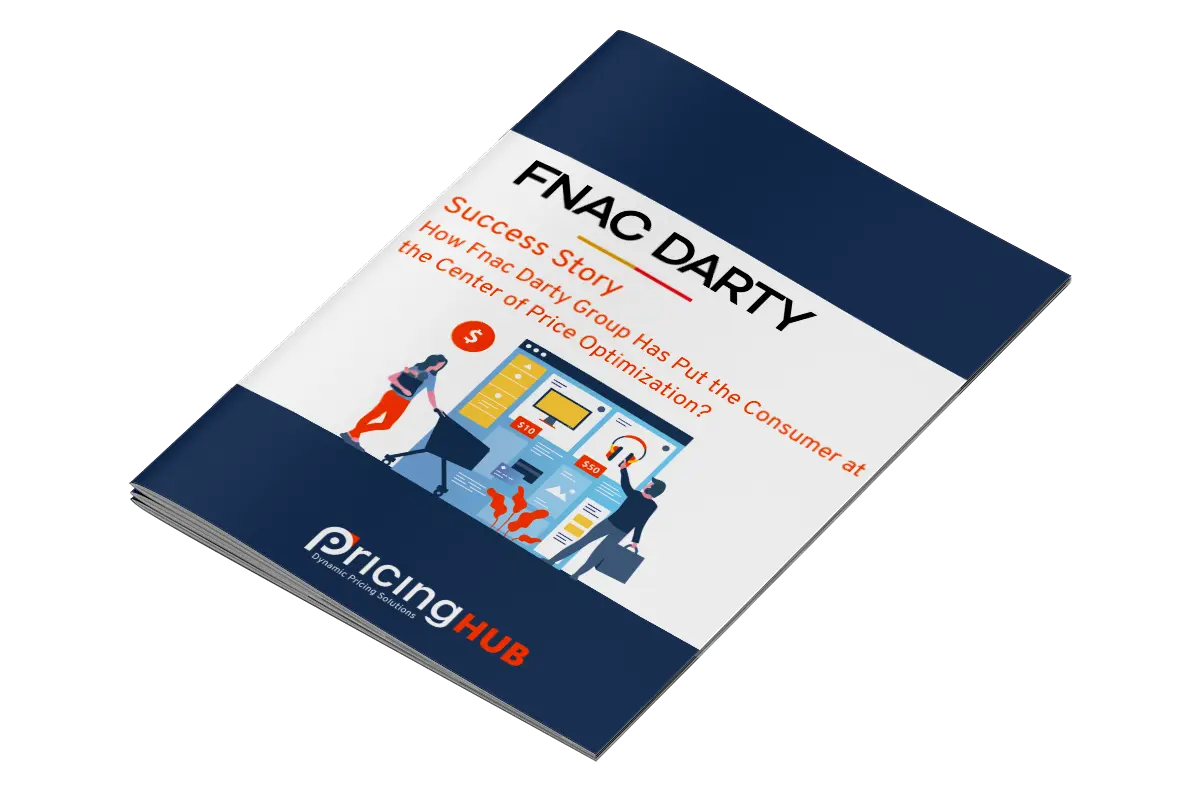In order to effectively refine your pricing strategy, it’s crucial to delve into the concept of price monitoring. Let’s start by defining what price monitoring is and why it plays a critical role in business success. Price monitoring, also known as price surveillance, is a critical process for businesses in today’s competitive market landscape. It involves the continuous tracking and analysis of prices for products and services, both of one’s own brand and those of competitors. This strategic approach enables retailers and other businesses to make informed pricing decisions, ensuring they remain competitive while maximizing profitability. According to a BCG’ study, this could lead to a loss of up to 10% of a company’s revenue. The importance of price monitoring lies in its ability to provide real-time market insights. It allows businesses to understand pricing trends, consumer behavior, and market dynamics. This knowledge is crucial for maintaining a competitive edge, as it helps in adjusting pricing strategies proactively to meet market demands and consumer expectations. In PricingHUB’s tool, we have included all those features to help you grasp and get the best out of your pricing strategy. Now that we understand the basics of price monitoring, let’s delve into the tools and techniques used in the process. In the realm of price monitoring, the diversity of tools and techniques plays a pivotal role in equipping businesses with the necessary insights for effective pricing strategies. Monitoring software often incorporates features like price tracking history, analytics dashboards, and alert systems, providing a comprehensive view of pricing dynamics. For instance, tools like PricingHUB Saas solution can facilitate historical price analysis and enable businesses to understand long-term trends and seasonality effects on pricing. The impact of real-time data analysis in price monitoring extends beyond mere price adjustment. It empowers businesses to conduct scenario analysis, where various pricing strategies can be simulated to predict outcomes based on different market conditions. This proactive approach in pricing strategy not only mitigates risks but also identifies potential opportunities for revenue growth. Real-time analysis also supports personalized pricing, where prices are tailored based on customer profiles and behaviors. This level of granularity in pricing helps businesses to cater more effectively to their target audience, enhancing customer satisfaction and loyalty. Having explored the tools and techniques, we now turn to the benefits that price monitoring can bring to a business. Understanding and leveraging your competitive advantage is crucial for business success. By analyzing market trends and competitor performance, businesses can identify unique value propositions. Effective pricing strategies enhance this advantage, ensuring optimal market positioning and profit maximization. Mastery of competitive dynamics and pricing excellence are essential for sustaining long-term growth and market leadership. Market adaptability is key in today’s rapidly evolving business environment. Companies must be agile, continuously monitoring market conditions and customer preferences. Adapting pricing strategies in real-time to reflect changes in demand, costs, and competitor actions is critical. This approach not only safeguards revenue streams but also positions the business as a responsive and customer-centric entity, ensuring competitiveness and longevity in the market. With the competitive advantages of price monitoring clear, let’s consider how it can be implemented effectively within your business. Implementing price monitoring starts with the integration of monitoring software into the existing systems of a business. This integration ensures that price data flows seamlessly between different platforms, enabling more efficient and accurate pricing analysis. By having a unified system, businesses can better monitor market trends and make informed pricing decisions. Unified system’s integration is a key element to contribute to the success of the price monitoring strategies. That’s why it’s important to carefully choose your provider. Because it’s our core business with PricingHub we guarantee a smooth integration and a quick launch. For price monitoring to be effective, it’s essential to provide adequate training and support to the teams involved. This ensures that they can effectively use the monitoring tools and interpret the data accurately. At PricingHUB, we understand that pricing issues are important to our customers and can sometimes be complex. That’s why we have a Customer Success Management team dedicated to our customers, to help them find the best possible solutions to their problems. Many businesses have successfully implemented price monitoring strategies, leading to improved market competitiveness and profitability. These success stories often highlight how effective price monitoring has helped businesses to adapt pricing strategies quickly, optimize product pricing, and improve their overall market position. Find out how Fnac Darty measures consumer price sensitivity to quickly adapt to the market and anticipate its changes. Having discussed implementation, we now look ahead to the future of price monitoring and what it entails. The integration of AI and machine learning into price monitoring transcends mere data processing; it involves a nuanced interpretation of market signals and customer sentiment analysis. These technologies unearth patterns and trends, enabling businesses to foresee and adapt to market fluctuations proactively. For example, machine learning algorithms can sift through historical data to forecast price changes across seasons or economic shifts, empowering companies to tailor their pricing strategies effectively. Adding to this technological landscape, PricingHUB’s SaaS solution exemplifies innovation in price optimization. Our platform, designed for retail and e-commerce leaders, harnesses artificial intelligence to refine product pricing strategies, aiming to protect margins, boost sales, or enhance revenue. We offer a nuanced control over pricing, grounded in data-driven insights. Our approach leverages price elasticity and machine learning, including reinforcement learning, to center the customer in pricing strategies. This allows for a precise assessment of consumer price sensitivity and the impact of price optimization, setting the stage for informed and effective business decisions. Moreover, the emergence of blockchain technology heralds a new era for price monitoring, offering unparalleled transparency and data integrity. Blockchain’s capacity to provide a secure, unalterable record of pricing data ensures the reliability of information for comparison and analysis, crucial in volatile pricing sectors. The Internet of Things (IoT) further enhances price monitoring by funneling real-time data from diverse sources, including physical stores. This enables the implementation of dynamic, responsive pricing models that can be adjusted instantly based on live market conditions or stock levels. In summary, price monitoring is evolving dramatically, fueled by advances in AI, machine learning, big data, blockchain, and IoT. These innovations not only augment the analytical prowess of pricing tools but also furnish businesses with deeper market insights and more flexible pricing mechanisms. This evolution is imperative for companies aiming to stay competitive, respond to market dynamics swiftly, and make informed pricing decisions, securing their success in an increasingly complex market landscape. Meet with one of our pricing experts Price monitoring: optimize your pricing strategy
Understanding price monitoring
Definition and importance
How price monitoring works
Tools and technique
Moreover, tools like PricingHUB are increasingly utilizing cloud-based technologies, allowing for scalable and accessible price monitoring solutions. This accessibility ensures that our clients, regardless of size, can leverage the power of price monitoring to make data-driven decisions. Additionally, the integration of artificial intelligence in these tools has paved the way for predictive analytics, where businesses can forecast future market trends and adjust their pricing strategies accordingly. Real-time data analysis
Benefits of price monitoring
Competitive advantage
Market adaptability
Implementing price monitoring in your business
Integration with existing systems
Training and support
Case studies and success stories
Fnac Darty puts the customer at the heart of the price definition
Future of price monitoring
Emerging trends and technologies
Discover the benefits of create a price monitoring strategy


